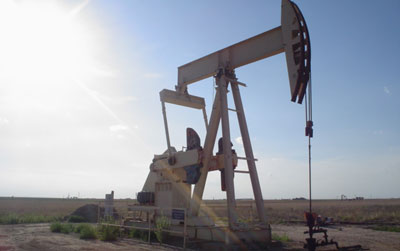$50 Oil: So Close, Yet Oh So Far

U.S. futures slip below $48, as inventories increase more than expected
Oil prices pulled back from a one-month high on Wednesday, as yet another rally fizzled on a muddled supply outlook.
Having pushed to nearly $50 a barrel in early trading, U.S. oil prices slid after government data showed that inventories of crude oil and refined fuels rose to a record high last week. U.S. crude-oil production also unexpectedly increased.
Wednesday’s data halted a rally fueled earlier in the week by forecasts for stronger global demand growth and continued declines in U.S. production.

The big swings are the latest in a year of whipsawing oil prices, which illustrate the uncertainty among investors and analysts over the size and scope of a global oil glut that had pushed prices to six-year lows as recently as late August. Conflicting data sets have also confused traders, as current production and consumption levels can be difficult—or sometimes impossible—to pin down.
“This kind of volatility makes it very difficult to take a view either way,” said Tim Rudderow, president of Mount Lucas Management, which oversees $1.7 billion. Mr. Rudderow has bet on shares of oil refiners, which he thinks are benefiting from robust demand for gasoline and other fuels. But he has no wagers in the oil-futures market, unlike earlier in the year when he held bets on lower prices.
On Wednesday, U.S. oil prices fell 72 cents, or 1.5%, to $47.81 a barrel on the New York Mercantile Exchange after the U.S. Energy Information Administration said that total commercial supplies of crude oil and petroleum products rose by 2.3 million barrels last week to 1.3 billion barrels, a record high in data going back to 1990.
Brent, the global benchmark, fell 59 cents, or 1.1%, to $51.33 a barrel on ICE Futures Europe.
The oil market is notably more volatile than in recent years. U.S. crude prices moved up or down more than 5% in a single day on 19 days so far this year, compared with just one day in 2014.
The reversal in oil prices undercut a rally in energy shares, with the broader stock market paring gains. The Dow Jones Industrial Average closed up 122 points after rising as much as 173 points earlier in the session.
The decline in oil prices followed a three-day rally that broke prices out of their narrow September trading range and pushed Brent above the psychologically important $50-a-barrel level. Oil prices are down more than 40% in the past year.

Investors have repeatedly piled into the market this year, pushing prices higher, only to exit en masse as new questions arise about the pace of global production or the strength of economic growth.
One of the biggest questions is how U.S. shale-oil production, which helped push the global market into a massive surplus last year, will react to a sustained period of low prices. U.S. producers have cut spending on new drilling, but they have also lowered their expenses and gotten more efficient.
The longest oil-price rally this year came in March and April, when traders eyed declines in the number of rigs drilling for oil in the U.S. and bet that U.S. production would soon fall. But once prices rose above $60 a barrel, producers added new rigs and told investors that they could profitably grow production at those prices. Many investors now see $60 a barrel as a ceiling on prices through the end of 2015 and into 2016.
“We’re getting so much better at getting oil out of the ground,” said Marshall Adkins, director of energy research at Raymond James & Associates. “You’re so close to the break-even price that…minor moves in the commodity” have outsize influence on cash flow.
The latest EIA estimates pegged September crude-oil production at 9 million barrels a day, down 600,000 barrels a day from a peak in April. But an EIA report released Wednesday showed an estimated increase in output last week to 9.2 million barrels a day.
“The market today wants everything solved overnight, forgetting that it takes a long time to shut down capital in an industry this large,” said David Ginther, senior vice president at Ivy Investment Management Co., who manages $800 million in energy-equity investments. “This is not solved in two months, or a quarter. This is solved in years.”
Mr. Ginther is invested in production and oil-field-services companies that are focused on the Permian Basin in West Texas, where output is continuing to grow.
An additional uncertainty is whether this year’s robust global demand growth can persist into 2016. Economists debate whether oil consumption is more linked to oil prices or to economic growth. In a study released this week, Clearview Energy Partners LLC argued that U.S. gasoline demand is more closely tied to oil prices, meaning that “a rebound in global crude prices may have potential to reverse these consumption gains.”
Concerns about global growth, especially in China, roiled markets in August and helped push oil prices to six-year lows.
“Demand has become a little bit of a wild card now,” said Steven Kopits, president of consulting firm Princeton Energy Advisors. “There are just too many variables to make a clean call.”
The EIA raised its global demand forecasts for this year and next on Wednesday, helping buoy prices. But also on Wednesday, the International Monetary Fund cut its global growth outlook for this year to 3.1%, down from its prior forecast of 3.3%.
Source: WSJ – U.S. futures slip below $48, as inventories increase more than expected





























